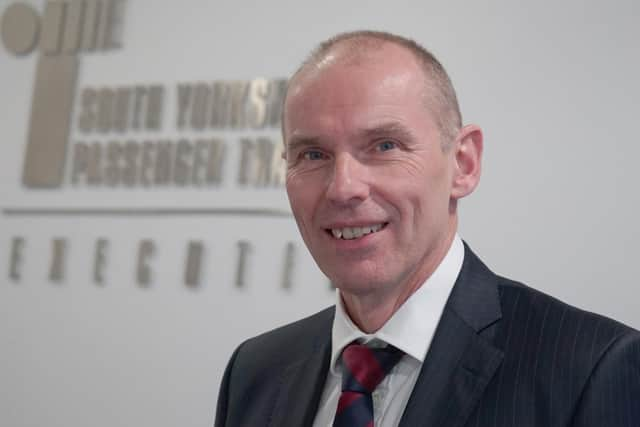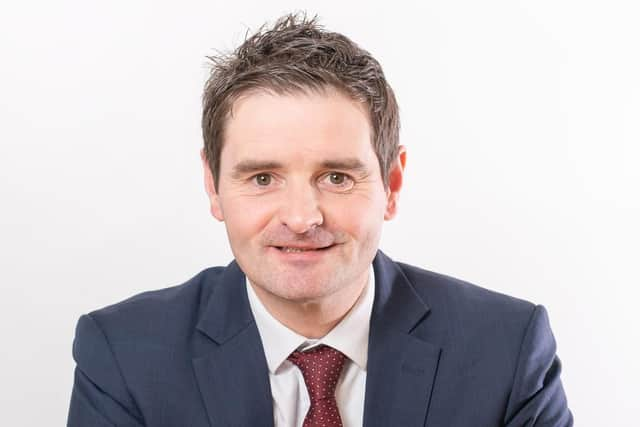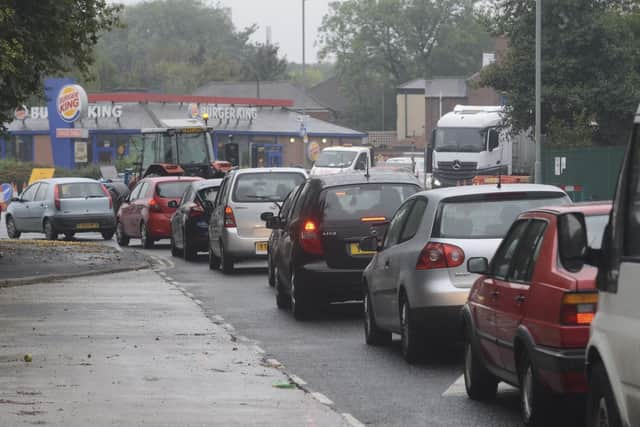‘A sea change in the way we travel needed’ to help ease traffic congestion in Sheffield


Sheffield Council announced plans for a 'pollution charge' of up to £50 a day to drive into the city, which will affect buses, taxis, vans, coaches and lorries.
The council said the ‘Clean Air Zone’ will help tackle pollution and ‘save lives’ but it will also mean drivers of high-polluting vehicles will have to either raise fees or absorb the high charges, which some have already said is not possible without extra funding.


Advertisement
Hide AdAdvertisement
Hide AdStephen Edwards, executive director of South Yorkshire Passenger Transport Executive, said easing traffic congestion in the city could only be achieved through a ‘sea change in the way we travel’.
He said: “Tackling traffic congestion in Sheffield can only be achieved through a sea change in the way we travel.
"The number of cars on our roads has left us with local air quality levels that are among the worst in the UK, and a resulting impact on life expectancy.


"Our population is disadvantaged because of the journey choices we make – that’s a big public responsibility."
Advertisement
Hide AdAdvertisement
Hide AdMr Edwards said more work needed to be done to explain the impact of pollution on health and the environment.
He added: "To change city congestion, there must be more awareness about the impact travel behaviour has on our health and environment, and more investment made in greener ways of getting around that are attractive, accessible and affordable to all.


"Our priority is to develop our region’s public transport, walking and cycling offer to make sustainable travel a viable alternative to the car.
"We know more people travel by bus than by any other mode of public transport in Sheffield. But promoting the potential of bus use continues to remain a challenge while public transport policy makers and providers are faced with the same Catch 22.
Advertisement
Hide AdAdvertisement
Hide Ad"A decline in passenger numbers forces a decline in bus network coverage. Bus companies can’t afford to run more services to encourage patronage at a financial loss, and public transport budgets remain under pressure."
SYPTE is also running a campaign to encourage drivers to commute car free on Fridays.
Garry Birmingham, managing director at First South Yorkshire, said more work was needed in Sheffield to make buses more attractive.
He said: "The traffic congestion issue in Sheffield can easily be resolved if key influencers in the region work together to make buses more attractive.
Advertisement
Hide AdAdvertisement
Hide Ad"Increased bus priority measures lead to reliable services, which in turn encourage more people to choose bus instead of car, leading to less cars on the road.
"Reduced congestion will also enable operators to schedule more effective bus services, thus further increasing the appeal of bus travel, which in turn, can lead to an improved bus service for customers.
"By working together, local authorities and bus operators can make a real impact on congestion and ultimately, air quality."
